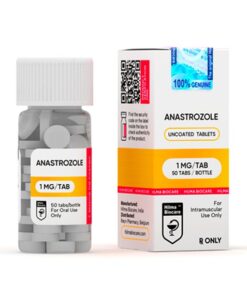Understanding Nandrolone: A Comprehensive Guide
Nandrolone, a synthetic anabolic androgenic steroid,often stirs a mix of interest and concern in the medical and athletic communities alike. This potent steroid, a derivative of testosterone, has been the subject of extensive research and discussion due to its significant impact on various medical conditions, as well as its controversial use in sports.
The Therapeutic Uses of Nandrolone
At its core, Nandrolone is primarily utilized in the medical field for its remarkable efficacy in treating certain forms of anemia and osteoporosis, among other conditions. This steroid aids in building and repairing tissues, making it an invaluable asset for patients suffering from these debilitating diseases. The ability of Nandrolone to facilitate the development of lean muscle mass and enhance bone density has been a boon for those with weakened or damaged tissue.
Nandrolone Decanoate: A Closer Look
A notable ester form of Nandrolone is Nandrolone Decanoate, widely recognized for its slow-release properties. This formulation extends the therapeutic effects of the drug, making it a preferred choice for prolonged treatment courses. The decanoate ester ensures a steady and controlled release of Nandrolone, thereby maintaining optimal therapeutic levels in the body.
Misuse in Bodybuilding and Sports
Despite its medical benefits, Nandrolone has gained notoriety in the world of bodybuilding and professional sports. Its misuse for muscle mass gain and performance enhancement is both illegal and hazardous. The temptation to use Nandrolone for these purposes stems from its powerful anabolic effects, which can significantly increase muscle size and strength. However, this practice is strictly prohibited in most sports organizations and is considered a serious violation of ethical standards in athletics.
Health Risks and Side Effects
The overuse or misuse of Nandrolone, or any other anabolic steroid, poses severe health risks. Users may experience a range of side effects, including hormonal imbalances, cardiovascular issues, liver damage, and psychiatric disorders. The potential for these adverse effects underscores the importance of using Nandrolone strictly under medical supervision and for legitimate medical purposes only.
Regulatory Status and Legal Implications
It’s crucial to understand that Nandrolone is classified as a Schedule III controlled substance under federal law. This classification indicates a potential for abuse and addiction. The possession, distribution, or use of Nandrolone without a prescription is a federal offense, punishable by significant fines and imprisonment. This strict regulatory status is a testament to the powerful nature of the drug and the necessity of its judicious use.
Administration and Dosage
The administration of Nandrolone is typically done through intramuscular injections, with dosages varying based on the medical condition being treated. It’s imperative that the administration of Nandrolone is overseen by a healthcare professional to ensure the correct dosage is administered and to monitor for any adverse reactions.
Comparing Nandrolone and Testosterone
While both Nandrolone and testosterone are androgens, there are critical differences in their effects and applications. Testosterone is a primary male sex hormone with pivotal roles in male sexual development and health, whereas Nandrolone, though similar in structure, primarily focuses on tissue building and repair.
Be the first to review “NANDROLONE” Cancel reply
Related products
Anabolics
Anabolics
Anabolics
Anabolics
Anabolics
Anabolics
Anabolics
Anabolics
















Reviews
There are no reviews yet.